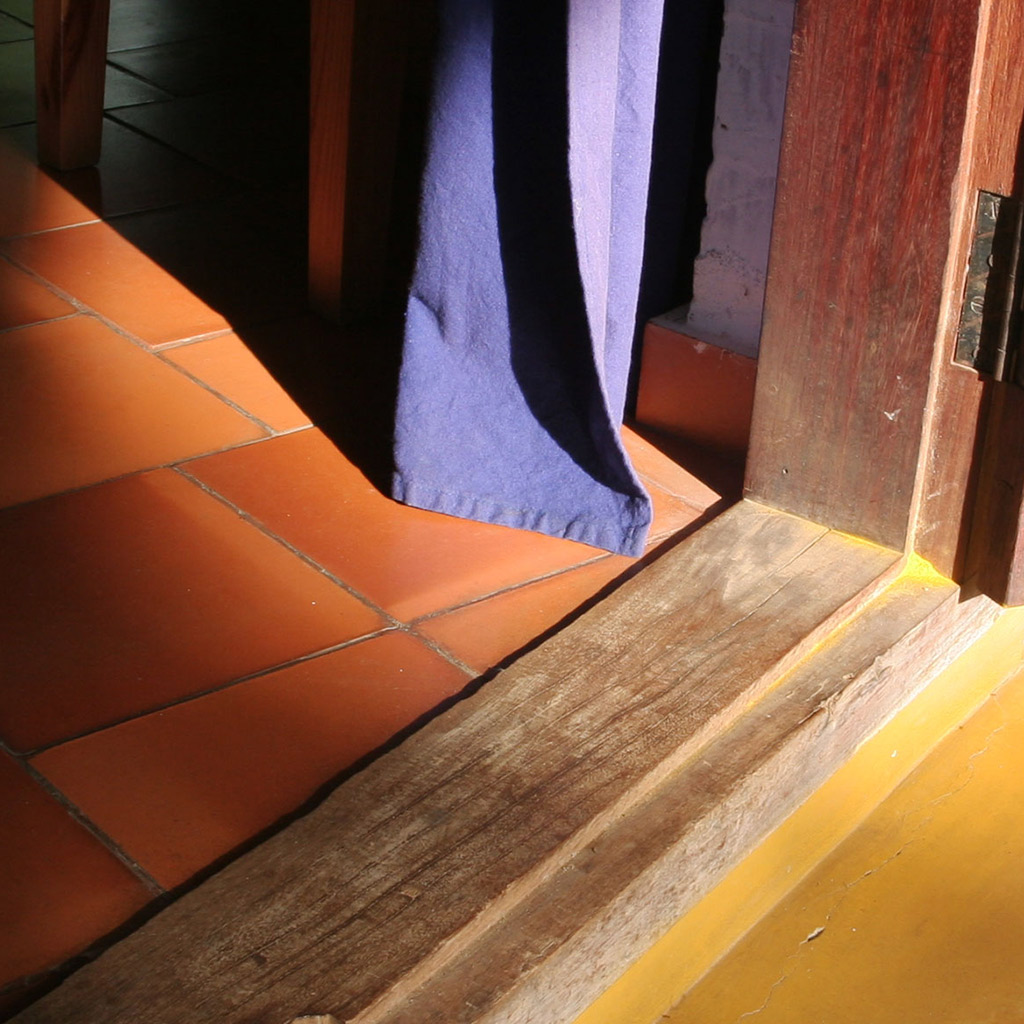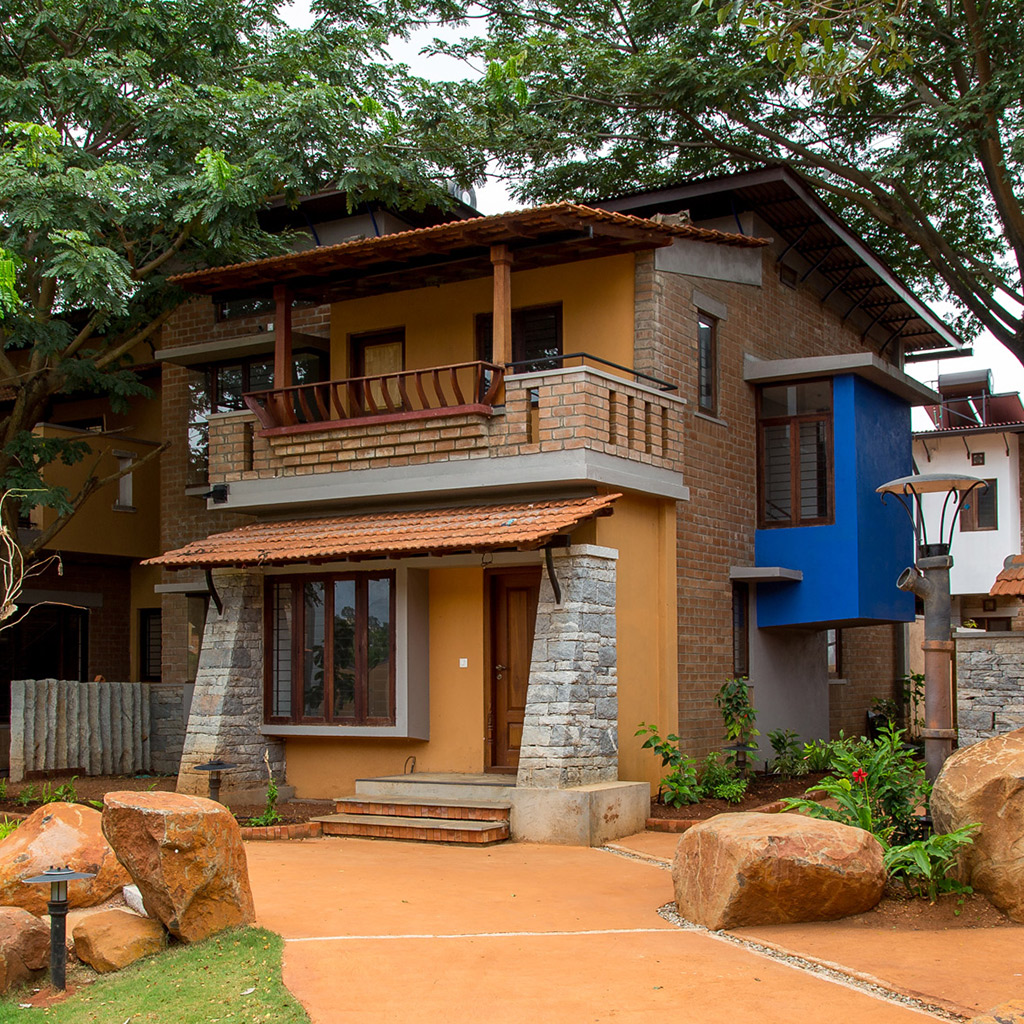Materials and Techniques
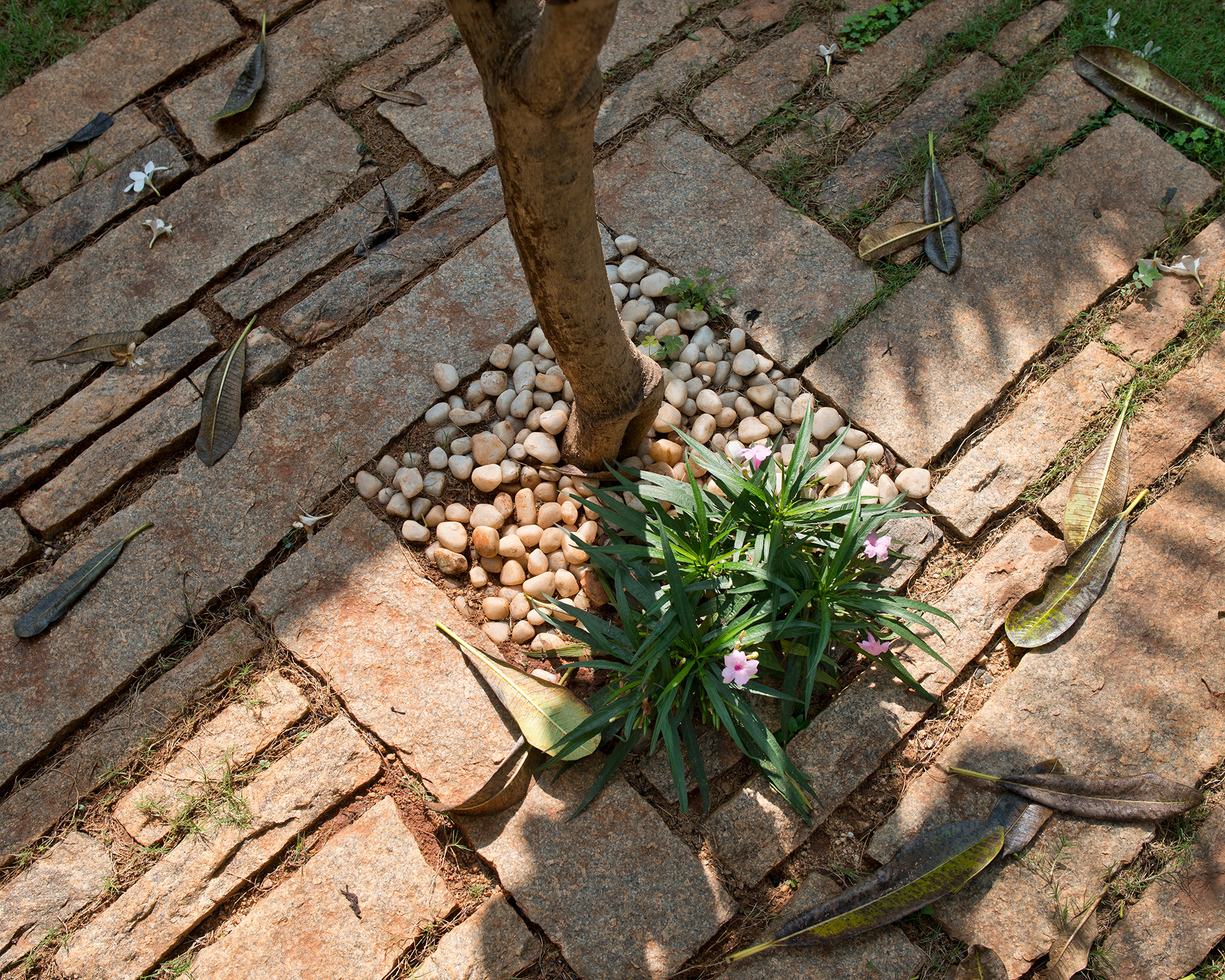
The materials and techniques with which we build are our language, our song. Compositions of textures and colour, chosen from a vast palette, articulate space and form. While communicating through the emotional, the decisions made must be based on sound economic, environmental and structural considerations.
While the production of many materials has been mechanized, the act of building still needs a huge amount of manpower. Newer materials, larger scales and inadequate training of the workforce have made the general quality of building in India very poor. An added challenge is an attitude which deals with poor workmanship through cosmetic treatments, solving nothing.
We believe that certain processes in construction must be mechanized. Better tools and equipment must improve the quality of work and make labour more efficient. Dignity of labour must be encouraged in areas where manpower is required. Skills and craft must be given their due and promoted at a level on par with “professional” roles.
In a country where people are our strength, human resources must be given a priority over material, and the market must respond to this. The architecture that evolves out of this culture – is what we aspire to build.
Aesthetics and Craft
Our intention is to work with design aesthetics that are honest in the expression of the materials and techniques used. We wish to blend traditional materials and craft with contemporary products and techniques as a reflection of our modern culture. The two need to evolve and innovate together, as newer patterns of living emerge and create a new visual language.
Art and craft are to architecture what poetry is to literature. They are the finer nuances of the language that appeal to our emotions. There must be a conscious effort to integrate these crafts and involve the crafts-person in the design and building process.
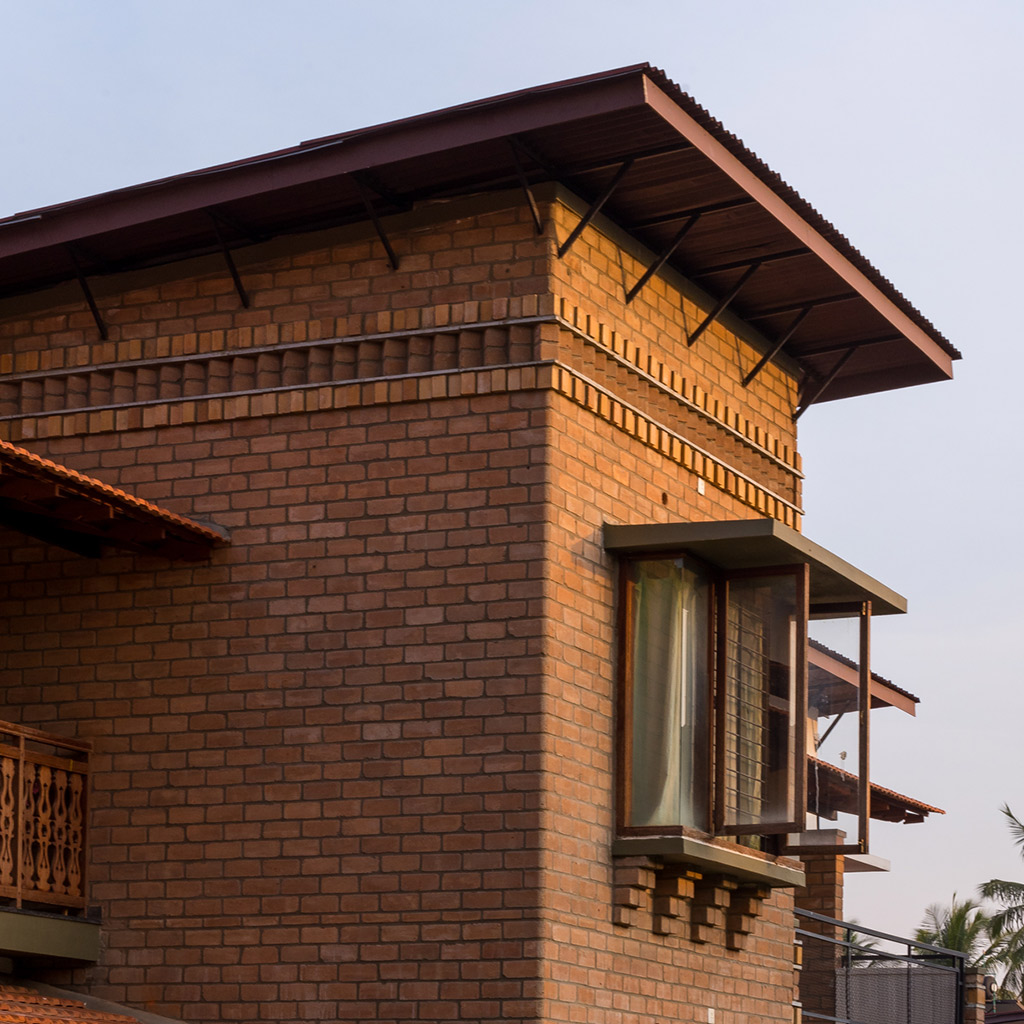

BUILDING WITH MUD
At Malhar, mud has been a primary building material for some years, from using rammed earth for compound walls, compressed stabilized earth blocks for wall masonry, mud concrete for pathways and stabilized mud plaster on surfaces.
Our journey with the different forms of mud has been an exciting and challenging one. There are no right answers, and the solutions are constantly evolving. Our most valuable learning has been that mud is a forgiving material, and mistakes can be recovered from along the path to mastering the technique. A medium with endless possibilities, the adventure has only just begun.
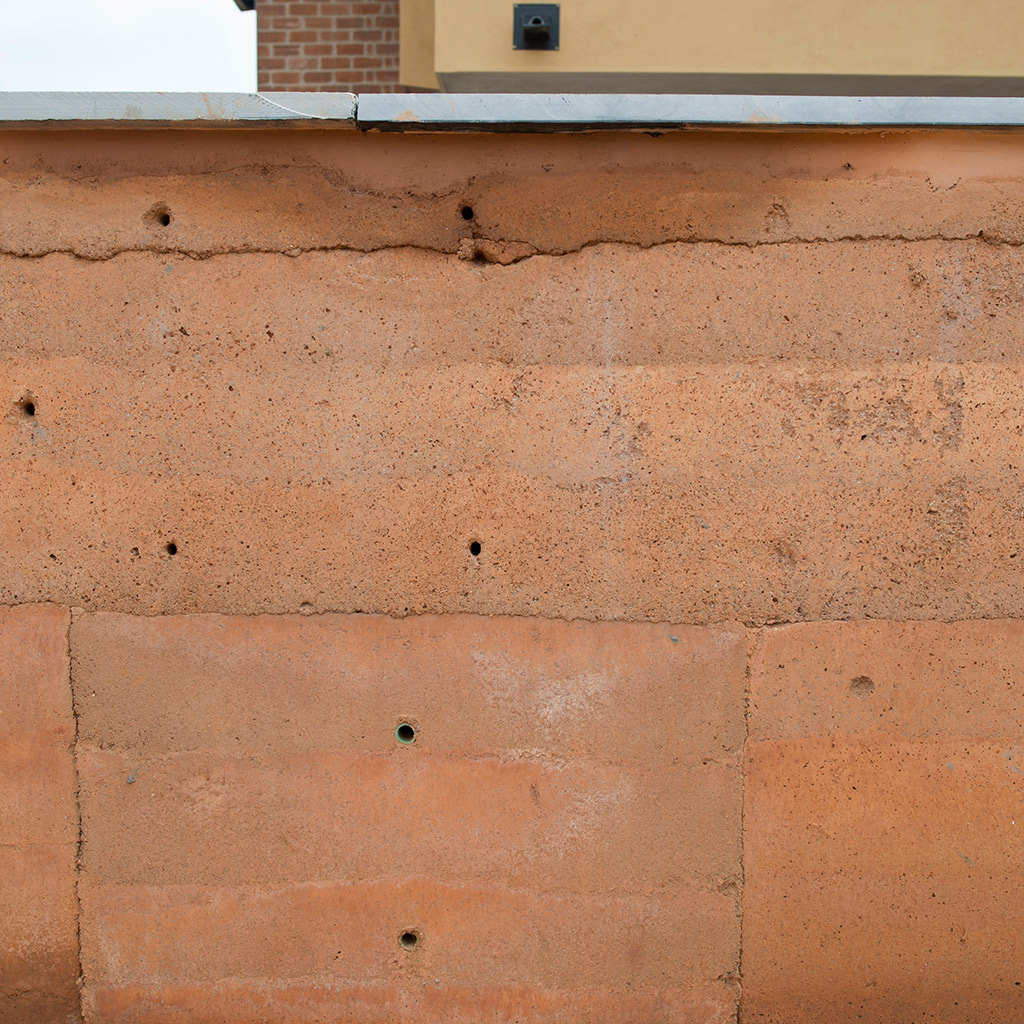
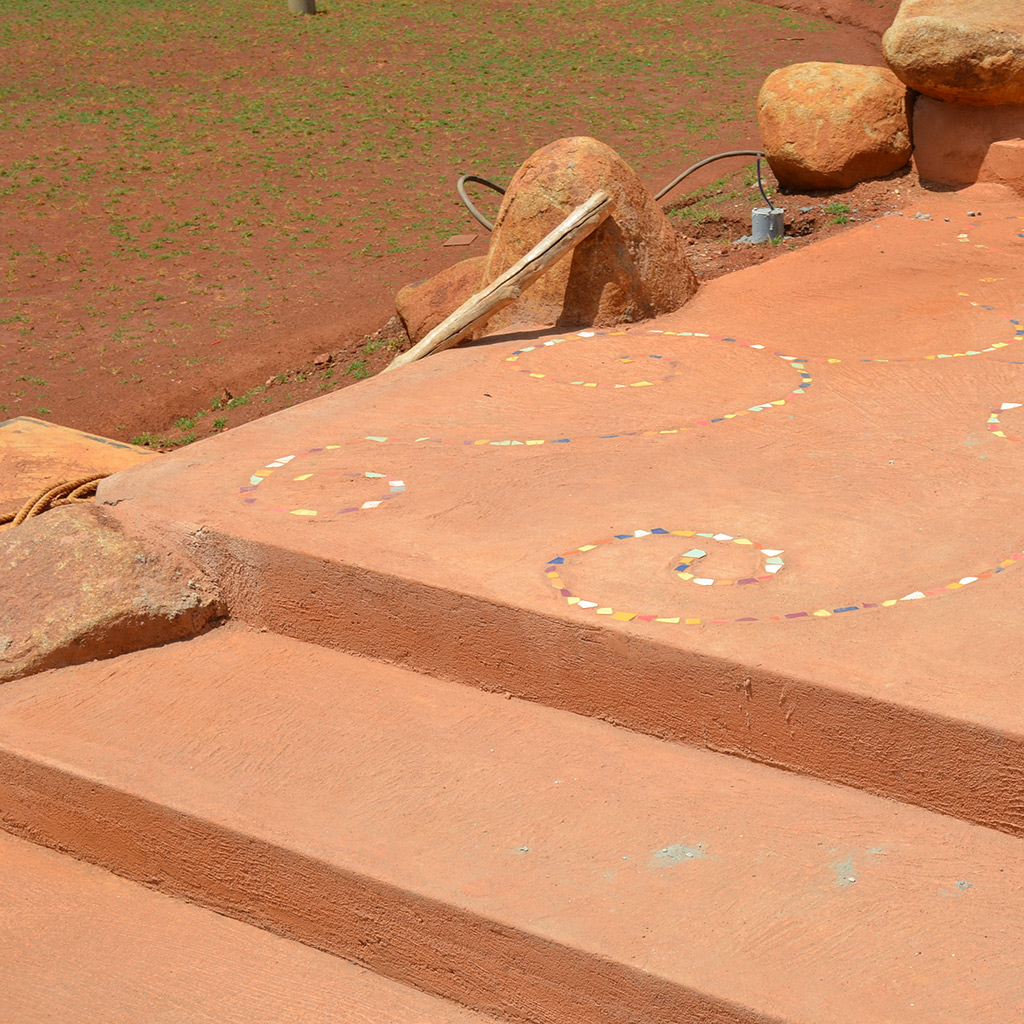
STONE
Building with stone is like using a thesaurus, each section of stone a word perfect in its context. A higher plinth to give a stronger visual base, a fence to support a creeper with red flowers, stepping stones in the garden, or a window seat… stone is an accent found across Malhar.
In Karnataka, natural stone is available in a multitude of forms useful for various applications. We developed a “stacked stone wall” masonry fabric using locally available chapdi stone slabs. Pieces of chapdi were stacked horizontally with cement mortar joints. This technique was worked on by teams of masons who typically build stone foundations. They gradually understood the aesthetic, and eventually different teams could build the wall with slight variations in expression, which was encouraged. We used this method in composite walls with mud blocks, as well as in stone masonry walls. The stone walls were 30 cm thick, and did have some seepage issues if not protected by adequate overhangs.
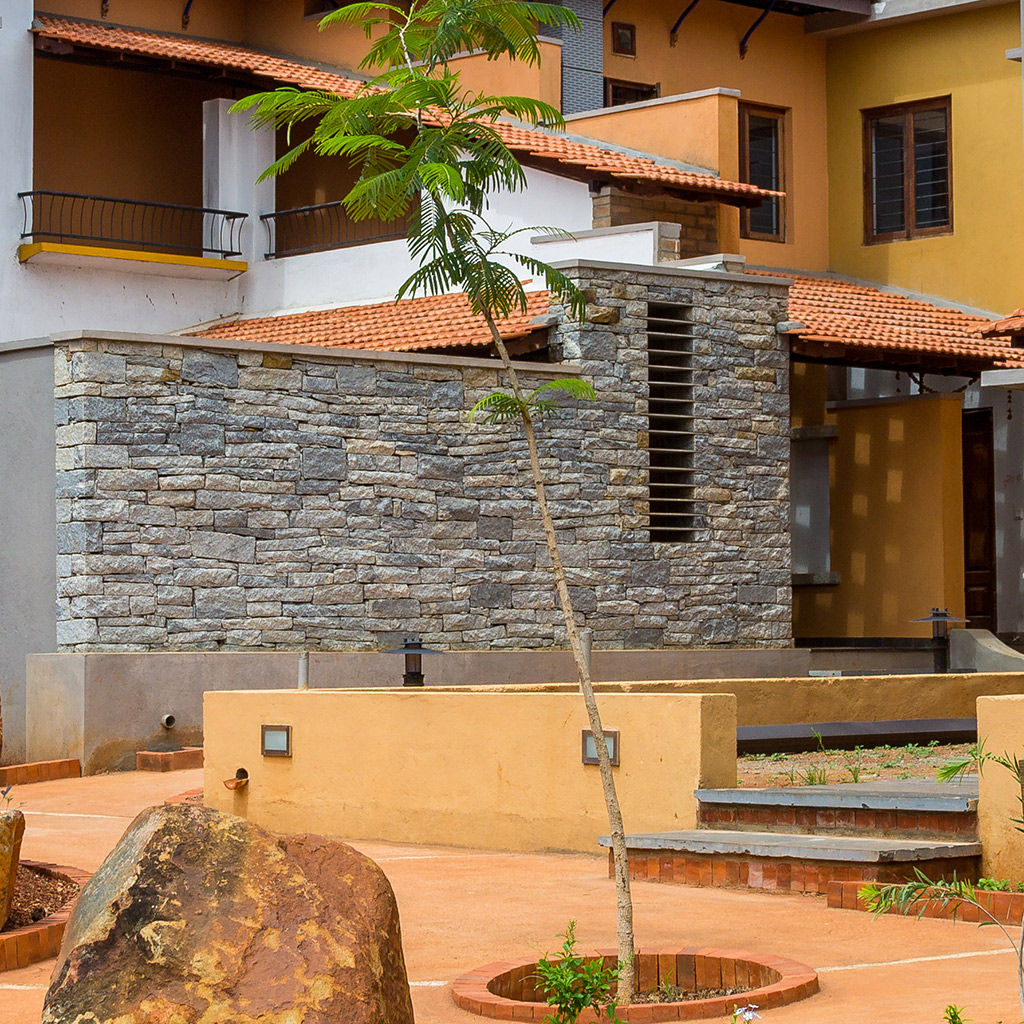
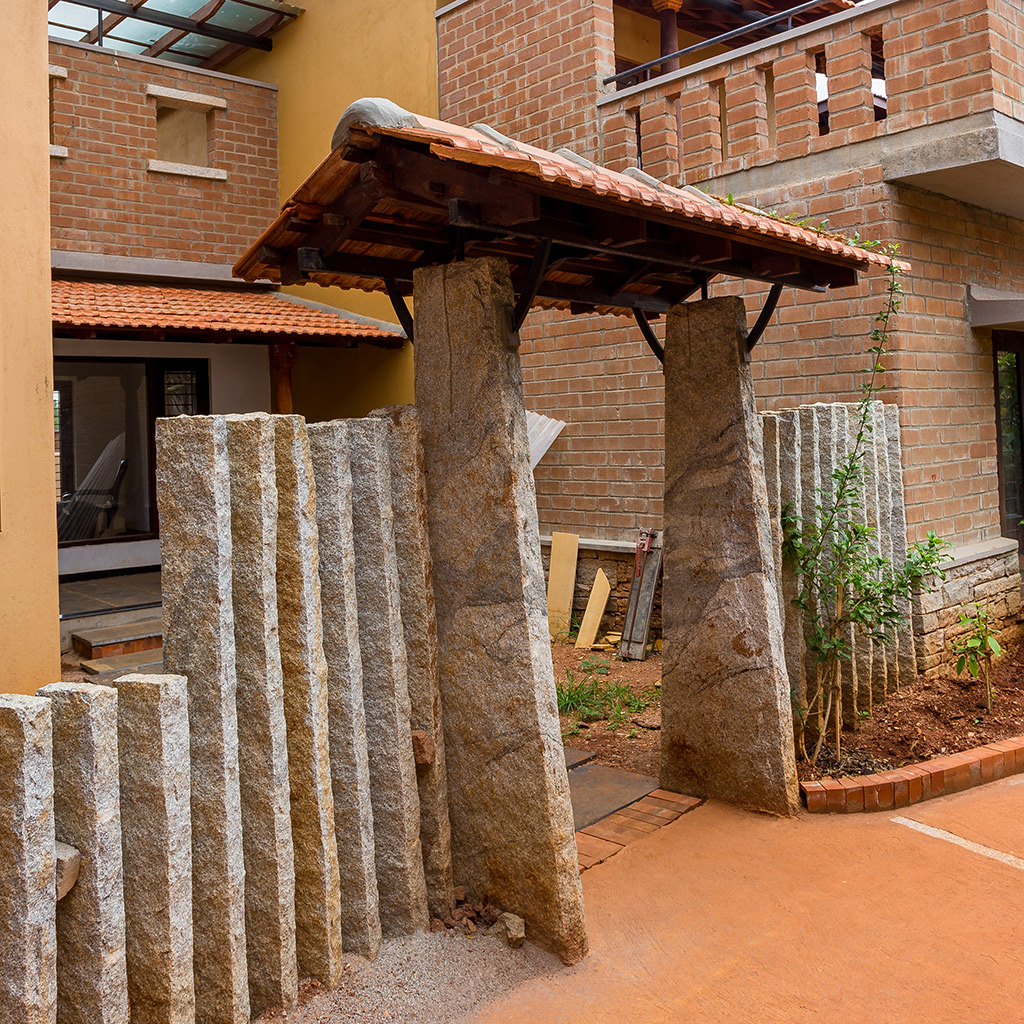
BRICK
The simple and ubiquitous Brick – its proportions an example of perfection, the bonding, a discipline – has been a teacher to us, as most of our earlier work was built in brick. The highlight of our explorations with the material has been the potential to push the limits of the brick and its craft through various forms and patterns, to create nuanced spaces with a distinct character.
At Malhar, we used hollow terracotta bricks as infill walls to an RCC framed building. The cavity in the bricks helps with insulation, and we have detailed it to enclose the frame to play with the aesthetic and proportion.
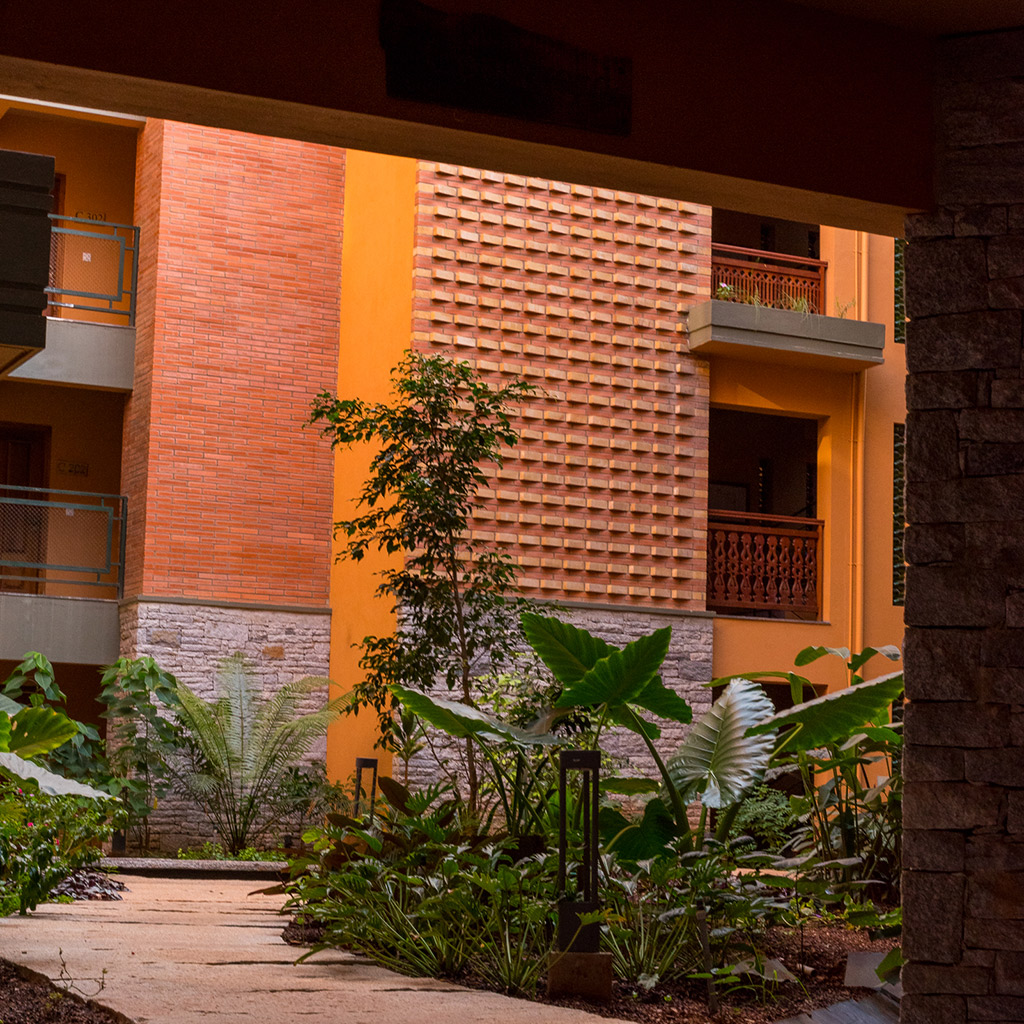
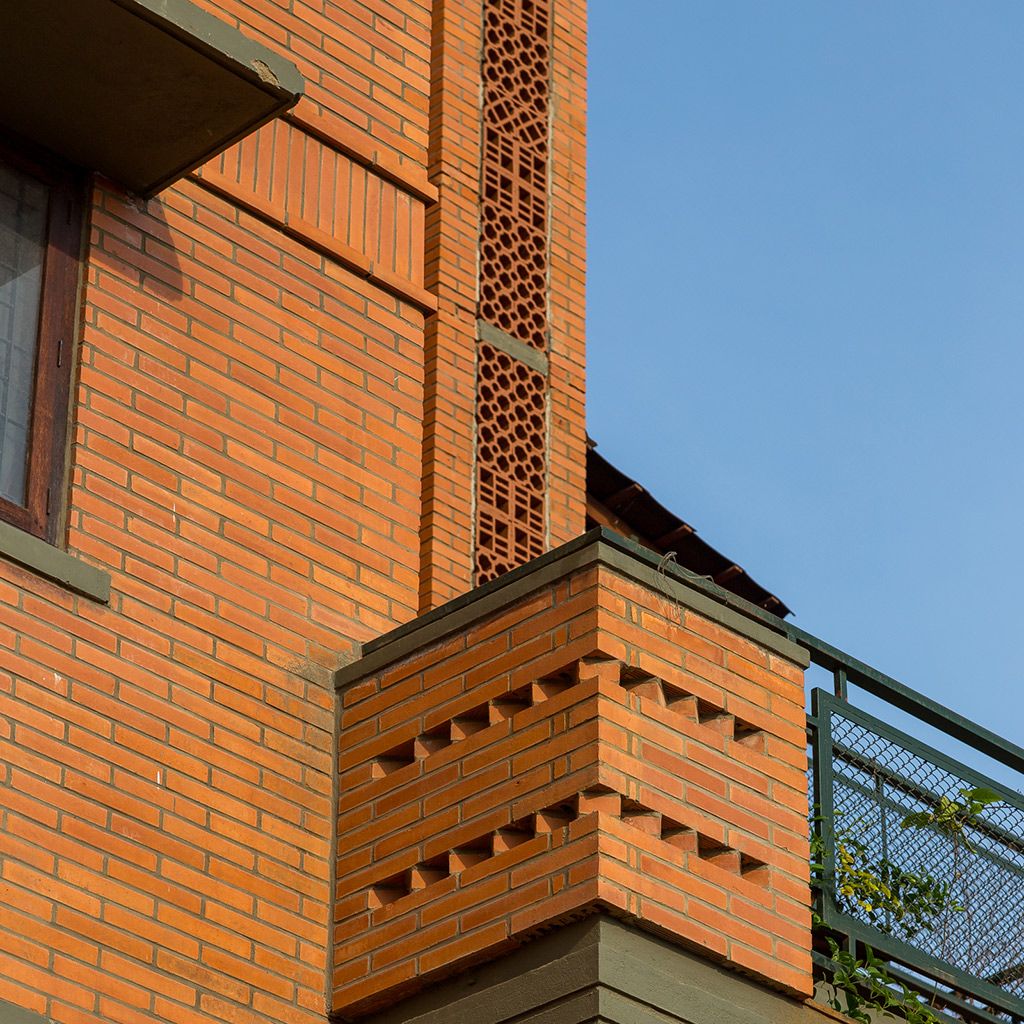
TIMBER
In many traditional societies in India, the carpenter was the “master craftsman” of the building, and the spaces, their proportions and details were a response to the property of the timber used as well as spatial requirements and site context. Timber building and craft have a rich tradition which is sadly gradually disappearing. We feel that timber is one of the most sustainable materials for the future of building.
Building with timber is an art and it needs a lot of rigour to understand the material, its strength and how it responds to climate. A living material, wood can be limitless in its expression, and inspires awe when used appropriately. Timber is a large component of our aesthetic – pillars for verandahs, doors and windows, railings, jaalis, rafters, floors. Wood, either in its raw form or subtly carved, finds its place in the panorama of the community.
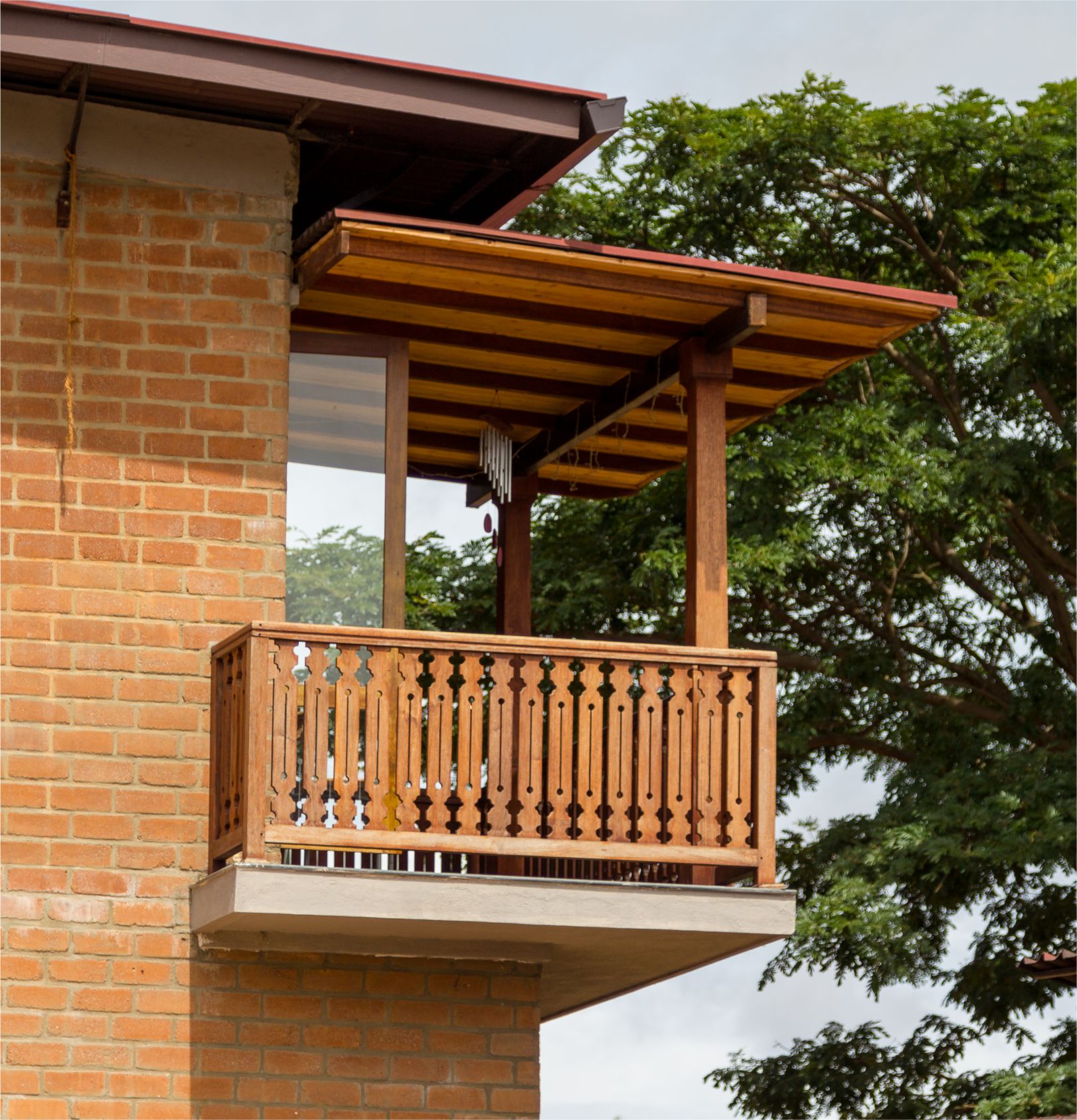
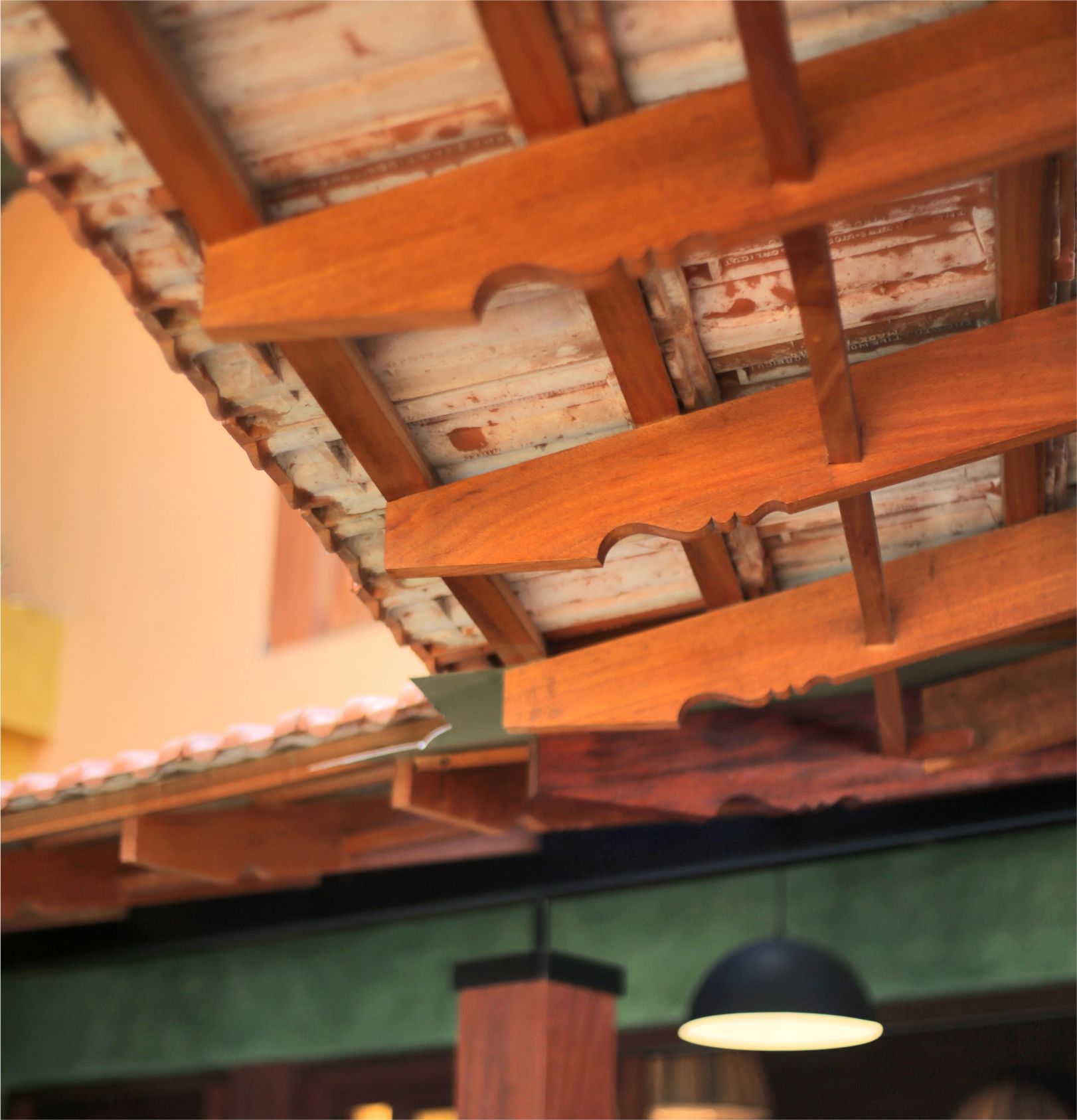
RCC
RCC has been used for floor and roof slabs across our projects. We optimise our house designs by working with a combination of load bearing masonry and framed structures. Using RCC to our advantage, we have been able to create openness of space by building fairly large spanned rooms and flexible upper stories. Cantilevers and creative structural solutions have been instrumental in creating the spaces we intend.


TERRACOTTA
Terracotta is a material that invites touch, its welcoming warm colours and textures complementing every space it is a part of.
It has thermal qualities that are conducive to creating comfortable spaces. Terracotta floor tiles are cool in summer and warm in winter. Roofing tiles absorb heat but also release it quickly, especially if there is a breeze. Hollow bricks act as cavity walls, insulating the space within. Filler blocks in concrete slabs play the same role, keeping the space cool while reducing the concrete and steel content in the slab. Terracotta can be a delicate material, with floors needing care in terms of use (no shoes or animal claws) for it, or chemicals to clean it.
Production of terracotta is a small to medium sized industry, where clay is mined and baked in kilns. Although this has an impact on the environment, due to mining and subsequent air pollution, when produced at a smaller scale, it is relatively less harmful than other industrialized products, like cement and steel.


GLASS
Floors
Our approach to selecting floor finishes has been to keep it simple. Preferring a single material in any one space, we have worked with highlighting the flooring through inlays and accents in strategic places.
Using natural materials in contexts that are applicable are preferred, although we do use other materials if required. The point to note when using natural floors is their care, both while laying the floor as well as while using it. Natural floors, unlike manufactured materials, come with variations in colour and level. Visual cracks, stains and patches are a part of the natural aesthetic and should be appreciated as part of its character.
Terracotta, Attangudi tiles, Kota and Cuddapah stone and wood are a few floors we have experimented with. We have also used ceramic and vitrified tiles where needed. Ceramic tiles are good for heat insulation and easy to maintain, but use a lot of energy in their production.
Paints and Polishes
Many materials used in the building industry today are not only toxic in their production, but also emit toxins after application. Paints and polishes are essentially cosmetic applications meant to protect the building from the elements. A lot of these applications which claim to be environment-friendly have traditional variants which are less processed and work just as well. The maintenance required, while possibly more frequent, is usually simple.
Water-bound distemper, which is a lime-based paint, is suited for walls, and is a more appropriate choice than emulsion or any other “plastic” finish that may be available. Using a mix of oils like cashew shell oil and linseed oil as an external finish for doors and windows is another choice we have experimented with. It protects the wood from insects and the elements. It allows the wood to breathe and retains its natural look.

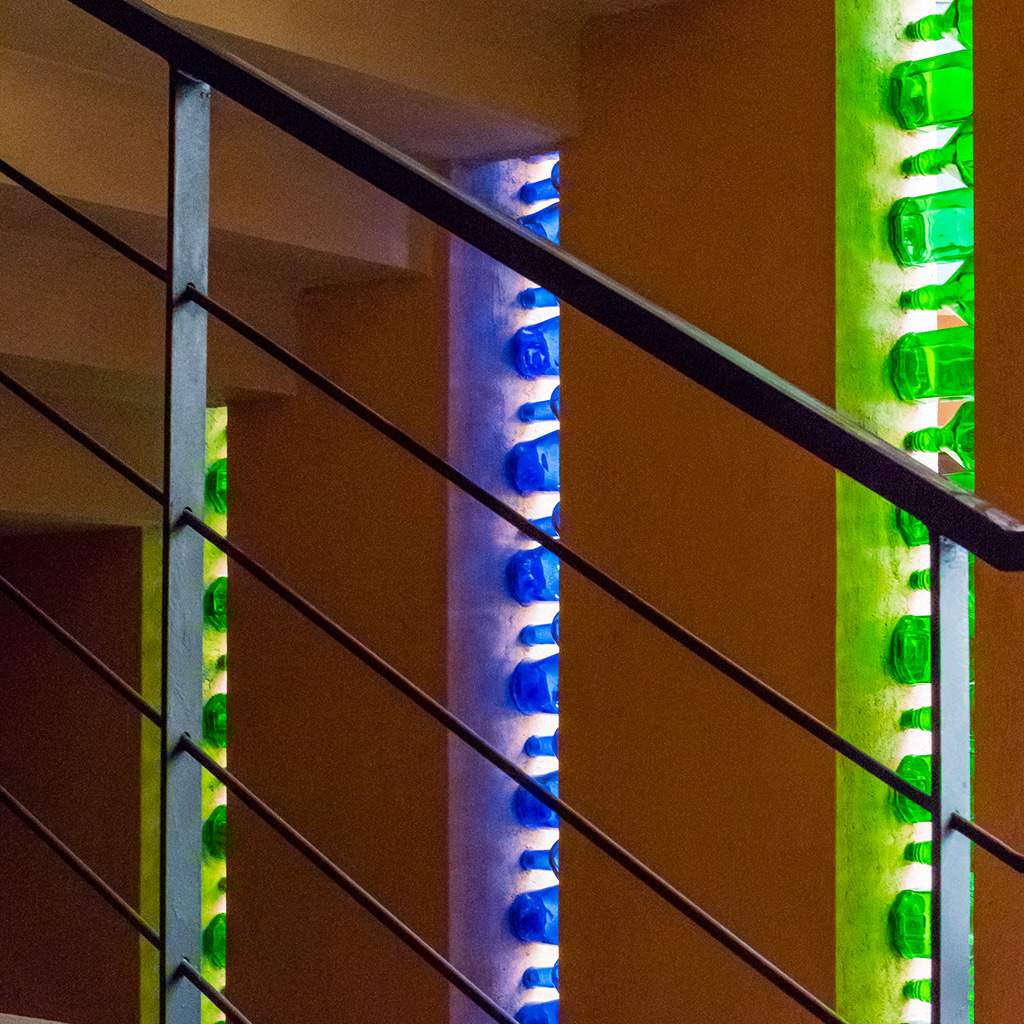
FINISHES
Floors
Our approach to selecting floor finishes has been to keep it simple. Preferring a single material in any one space, we have worked with highlighting it through inlays in strategic places or highlights.
Using natural materials in contexts that are applicable are preferred, although we do use other materials if required. The point to note when using natural floors is their care, while laying the floor as well as in using it. The natural floor will come with its variations in colour and level. Visual cracks, stains and patches are a part of its aesthetic and should be appreciated for its character. One cannot expect it to appear or behave like a synthetic floor. Terracotta, Attangudi tiles, Kota and Cuddapah stone and wood are a few floors we have experimented with. We have also used ceramic and vitrified tiles where needed. Ceramic tiles are good for heat insulation, easy to maintain, but use a lot of energy in their production.
Paints and Polishes
Many materials used in the building industry today are not only toxic in their production, but also emit toxins after application. Paints and polishes are primarily applied to any material, whether wood, metal or masonry, is to protect it from the elements and make it durable- the aesthetic is derived from that and not vice-versa. A lot of these applications which claim to be environment -friendly have traditional variants which are less processed and work just as well. They may require more frequent maintenance but are definitely healthier and easier to do so. Water bound distemper which is a lime-based paint is suited for walls, and scores over emulsion or any other “plastic” finish that may be available on these counts. Using a mix of oils like cashew shell oil and linseed oil for the external finish for doors and windows is another finish we have experimented with. It protects the wood from insects and the elements. It allows the wood to breathe and retains its natural look.
